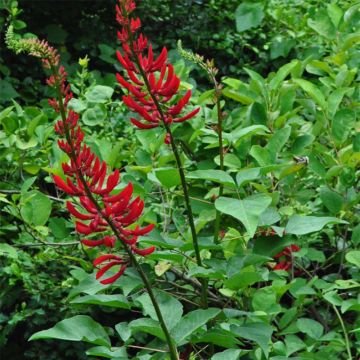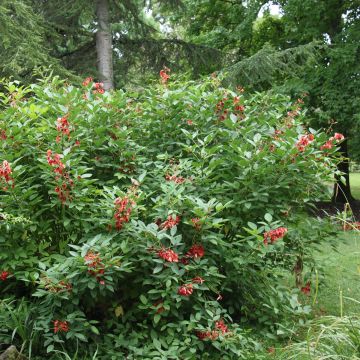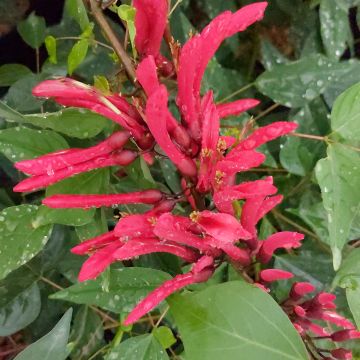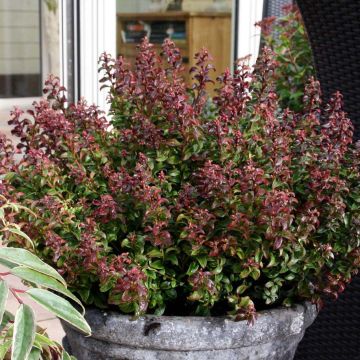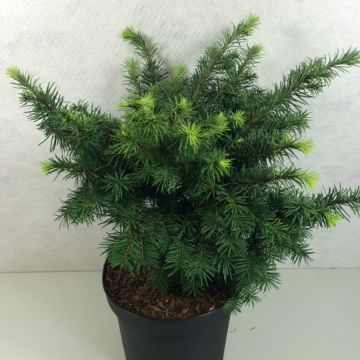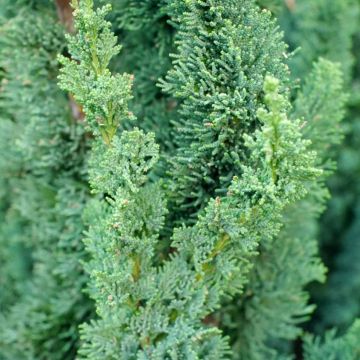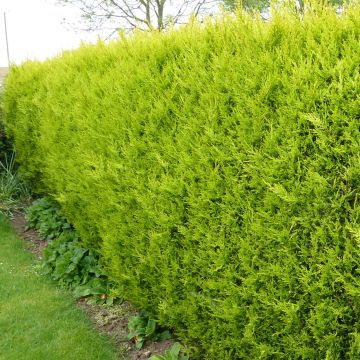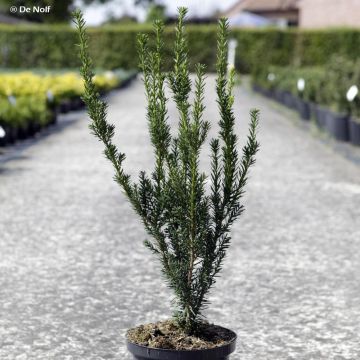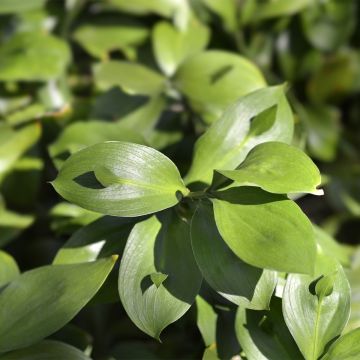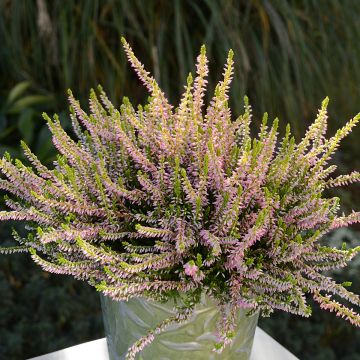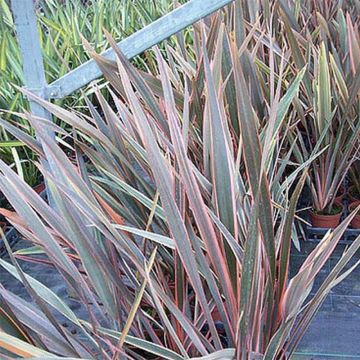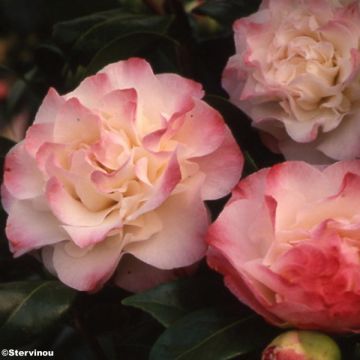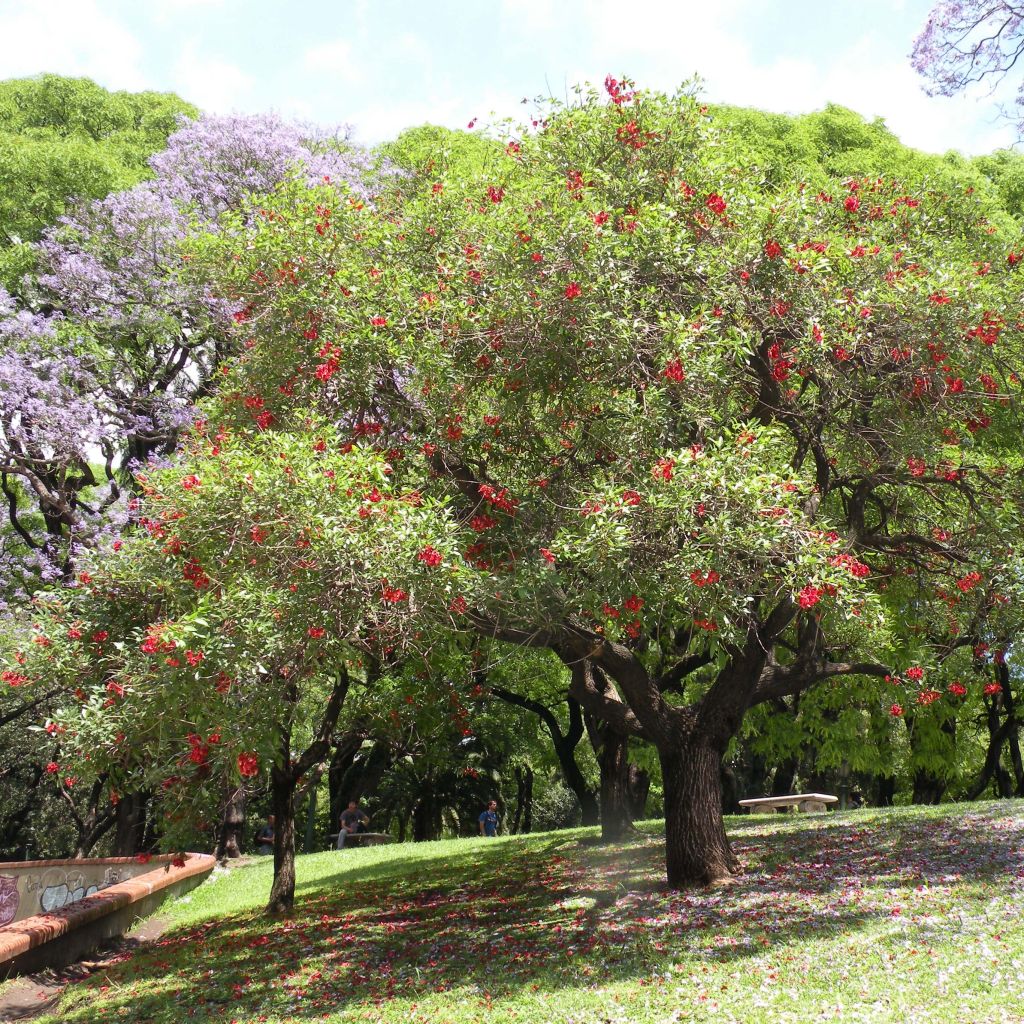

Erythrina crista-galli - Erythrine Crête-de-coq.
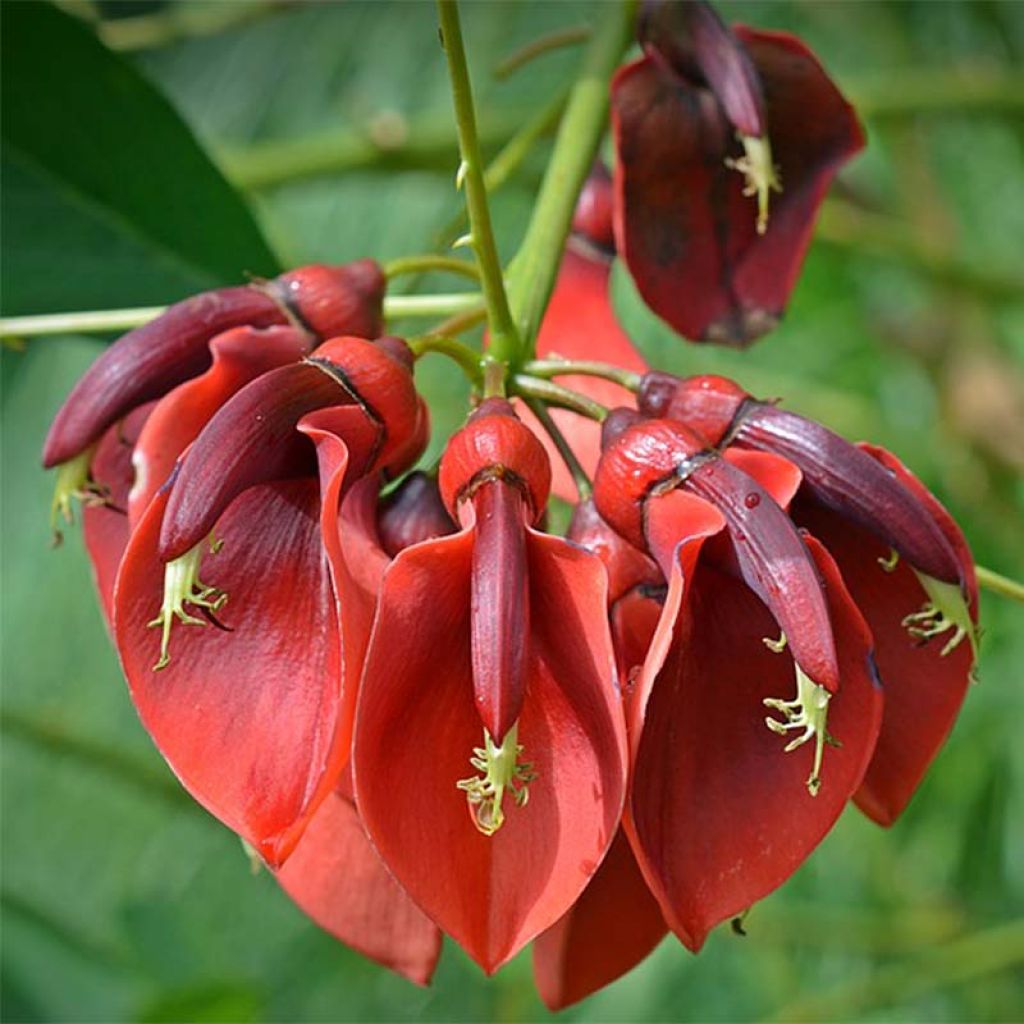

Erythrina crista-galli - Erythrine Crête-de-coq.
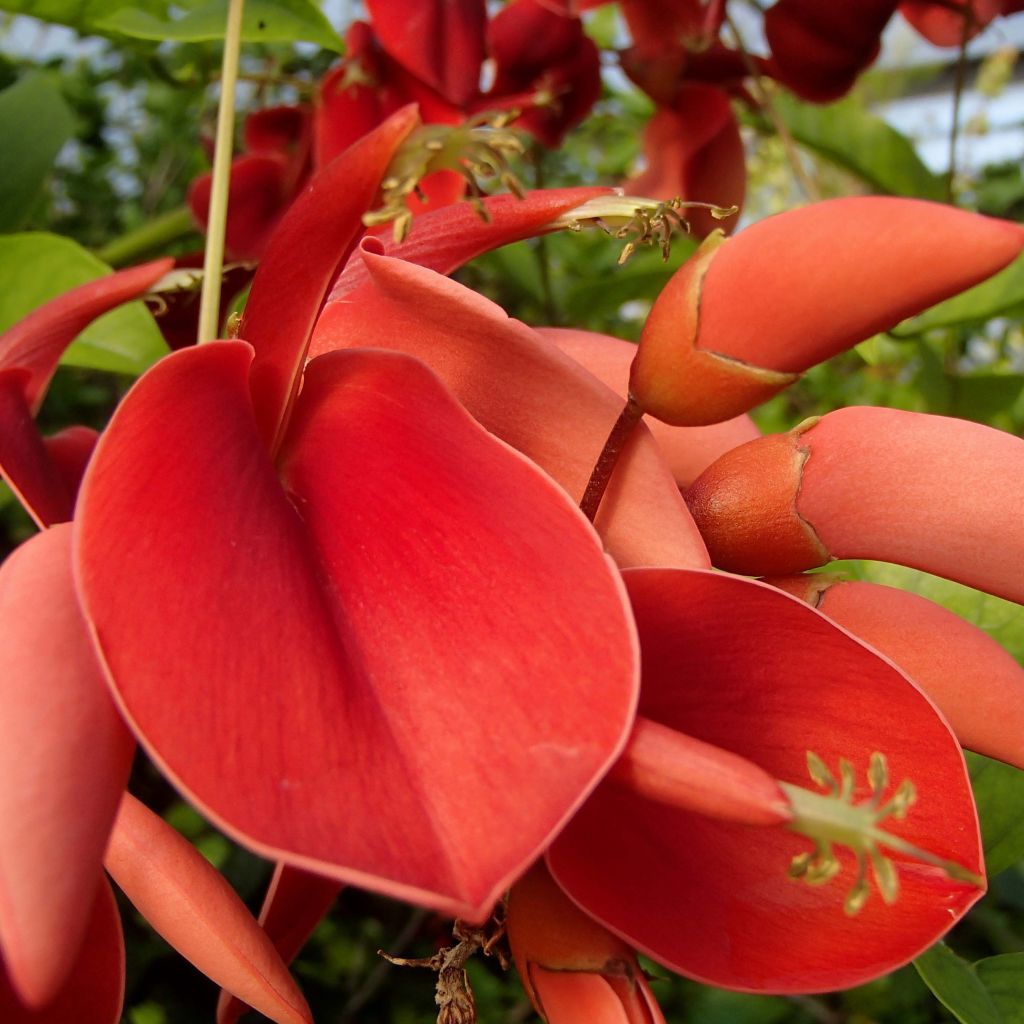

Erythrina crista-galli - Erythrine Crête-de-coq.
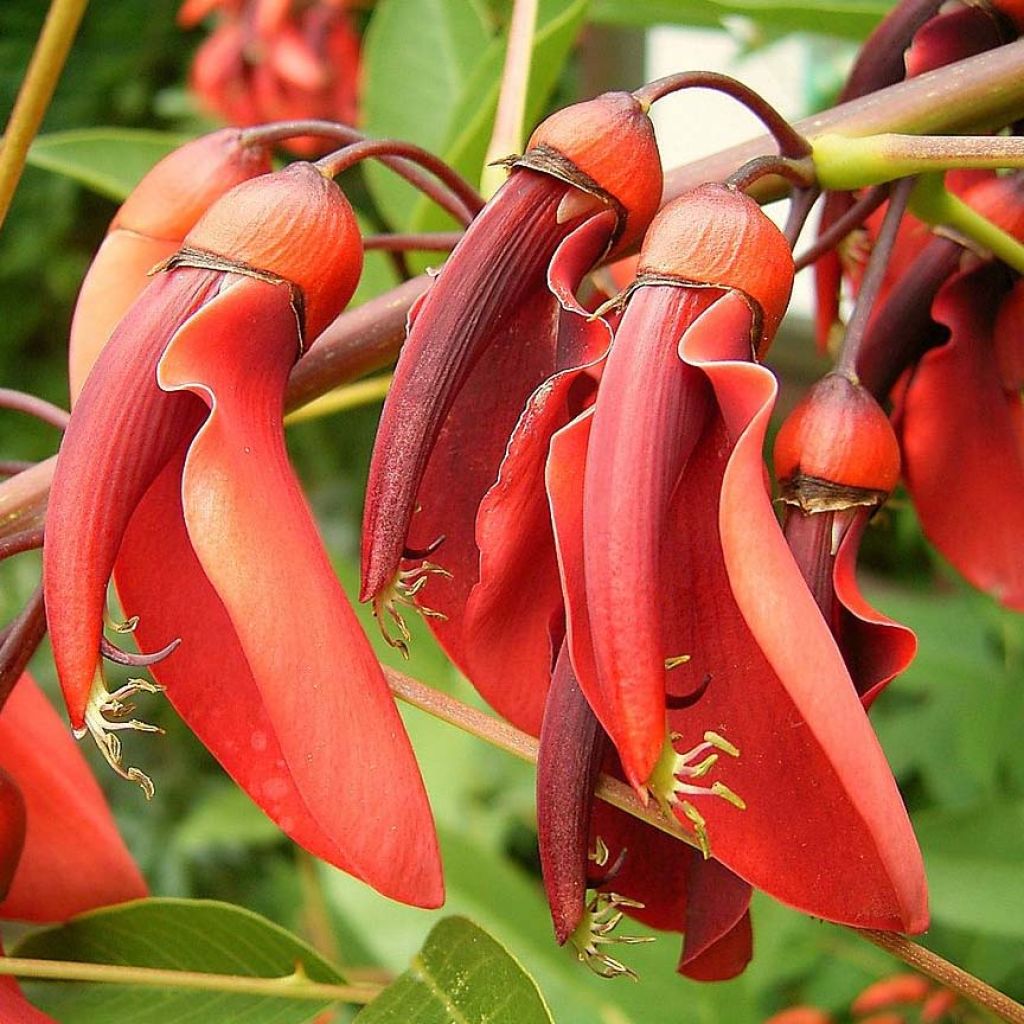

Erythrina crista-galli - Erythrine Crête-de-coq.
Erythrina crista-galli - Cockspur Coral Tree
Erythrina crista-galli
Cockspur Coral Tree, Cry Baby Tree
The plant arrived with one of the two stems bent. Now the stem that suffered is drying out. What a pity.
Hugues, 06/11/2024
This item cannot be shipped to the selected country
Delivery charge from €5.90
Oversize package delivery charge from €6.90
More information
Schedule delivery date,
and select date in basket
This plant carries a 24 months recovery warranty
More information
We guarantee the quality of our plants for a full growing cycle, and will replace at our expense any plant that fails to recover under normal climatic and planting conditions.
From €5.90 for pickup delivery and €6.90 for home delivery
Express home delivery from €8.90.
Oversize package: home delivery by special carrier from €6.90 per order..
Express home delivery from €8.90.


Does this plant fit my garden?
Set up your Plantfit profile →
Description
Erythrina crista-galli owes its name of coral tree to its spectacular inflorescences of bright red. This somewhat knotty bush with thorny branches and a wide crown has foliage divided like that of acacias, with a shiny blue-green colour, and produces large terminal clusters loaded with beautiful red-orange pea flowers in June-July depending on the climate. While it is the most well-known of the genus, this species is still not widely planted in our gardens. Particularly ornamental and exotic, this plant is relatively hardy due to its roots and can be grown in the ground as a perennial only in mild climates. Gardeners in continental climates will grow it as a greenhouse plant.
Erythrina crista-galli is a small tree or bush of the fabaceae family native to South America, particularly Bolivia, Argentina, Brazil, Paraguay, and Uruguay. This species, the hardiest of the genus, populates forests along rivers, marshes, and swamps. In its natural environment, the cockspur erythrina forms a tree 4 to 9 m tall, with a thick, knotty trunk and cross-hatched fissured bark. Its branches form a spreading crown with deciduous foliage during the dry season. It is cultivated in temperate climates as an herbaceous plant in the ground, or as a bush in a greenhouse. Its initially erect habit, becomes spreading over the years if it manages to form a small tree.
The coral tree reaches a height of 2 to 4 m (6 ft 7 in to 13 ft 1 in) with a spread of 1 to 2 m (3 ft 4 in to 6 ft 7 in), slightly less if pruned back each year due to frost. It produces long, slender, and thorny shoots. When it forms one or more trunks, they are knotty and covered with a beige bark with some curved thorns. The leaves are deciduous in winter in our latitudes and divided into 3 large leathery, shiny blue-green leaflets. Flowering takes place in late spring in mild climates, and in mid-August if the plant has regrown its branches in spring. At the tips and along this year's branches, clusters over 25 cm (9.8 in) in length form. The pea flowers have a large standard directed downwards. This nectar-rich flowering attracts many pollinating insects. As with most fabaceae, this plant has a powerful taproot capable of fixing nitrogen from the air, which is an adaptation to poor soils.
A spectacular bush, with a somewhat prehistoric appearance, the cock's comb erythrina is sometimes difficult to associate in the garden. In the ground, one could combine the relentless red of its flower clusters with the white flowers of buddleia, gauras, or deutzia. It could also be planted next to the Sophora secundiflora, a curious Texan bush of the fabaceae family producing blue clusters. This bush is not demanding on soil type and easy to grow in a large pot to overwinter in cold regions.
Report an error about the product description
Erythrina crista-galli - Cockspur Coral Tree in pictures
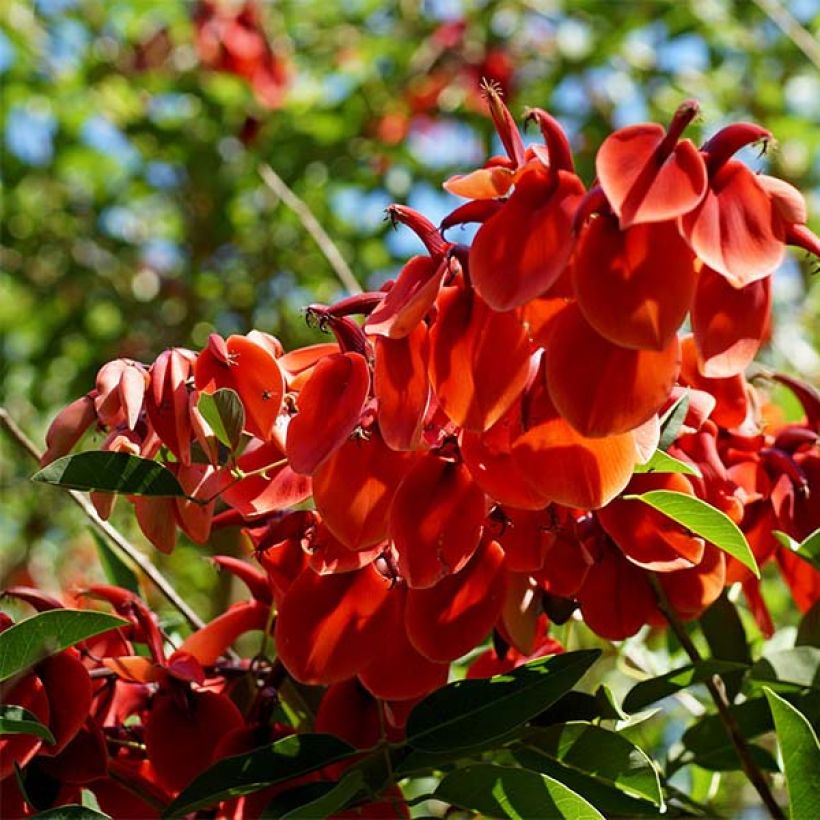

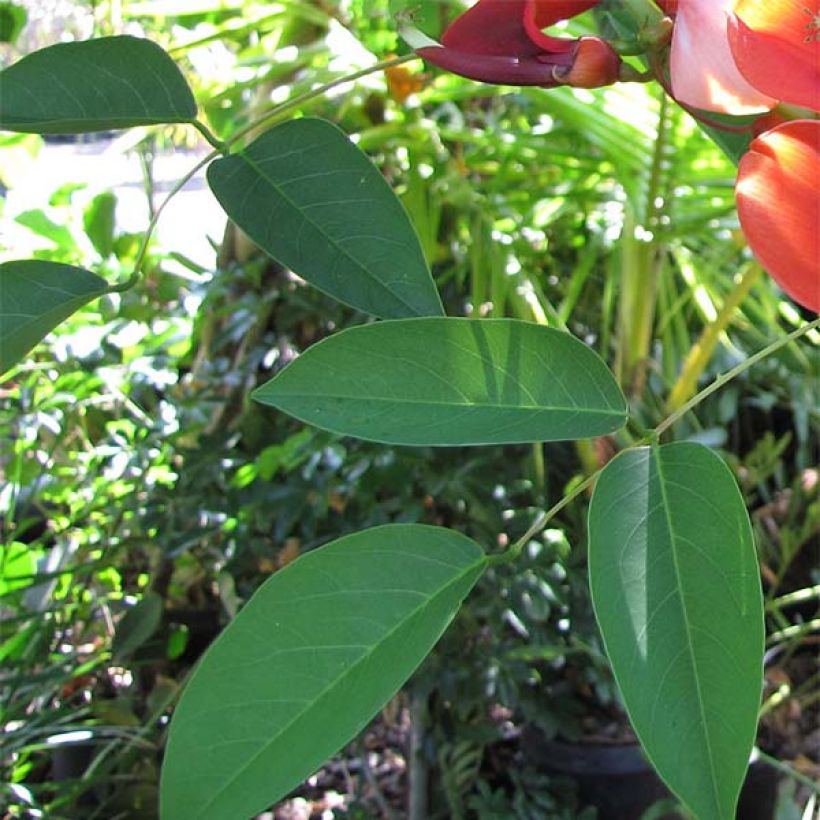

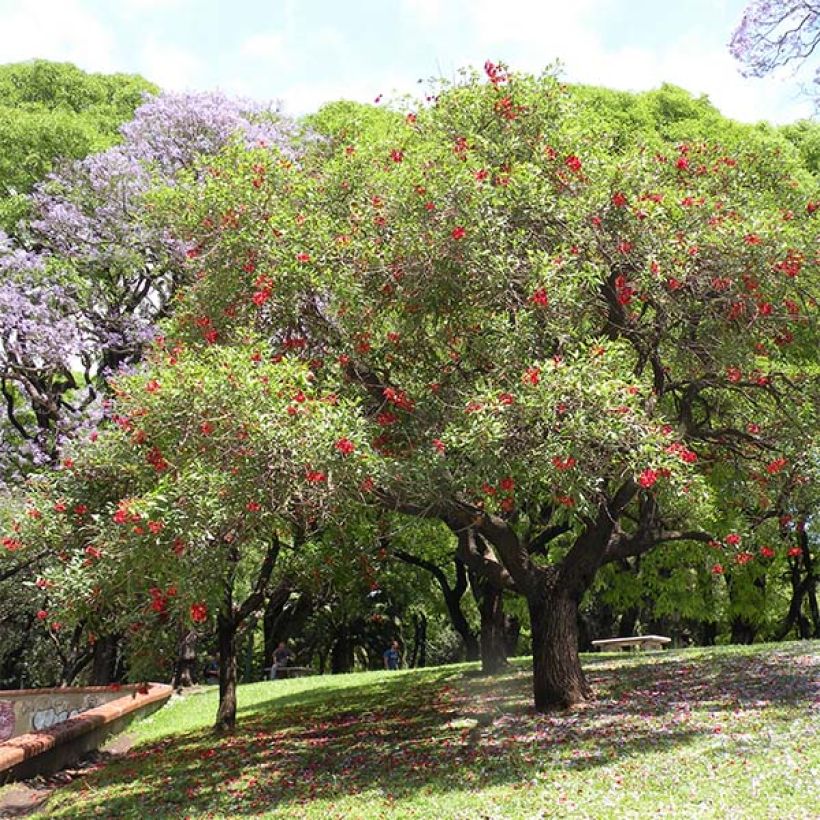

Plant habit
Flowering
Foliage
Botanical data
Erythrina
crista-galli
Fabaceae (Papilionacea)
Cockspur Coral Tree, Cry Baby Tree
South America
Other Erythrina
Planting and care
Erythrina crista-galli should be planted in spring, after the frost, in open ground in regions with mild coastal winters. Choose a sunny location sheltered from cold winds. Plant it in well-drained soil, enriched with sand and compost, as it is sensitive to waterlogged soils that will cause its roots to rot. Its hardiness is around -10°C (14 °F), when the crown is covered with a thick layer of mulch, 30cm (11.8 in) deep. In November, except in regions where there is no frost, prune the stems to 10cm (3.9 in) above the ground before spreading the mulch. Regularly remove faded flowers to prolong the flowering period.
Pot cultivation: choose a large container with drainage holes. Place a layer of gravel or clay pellets at the bottom of the pot. Use a mixture containing 1/3 garden soil, 1/3 compost, and 1/3 coarse sand. Monitor watering during the summer. Only apply fertilizer if the plant blooms poorly. Regularly remove faded flowers to prolong the flowering period. Bring the plant indoors to a bright and lightly heated veranda or to a cold greenhouse starting in October.
Planting period
Intended location
Care
-
, onOrder confirmed
Reply from on Promesse de fleurs
Evergreen shrubs
Haven't found what you were looking for?
Hardiness is the lowest winter temperature a plant can endure without suffering serious damage or even dying. However, hardiness is affected by location (a sheltered area, such as a patio), protection (winter cover) and soil type (hardiness is improved by well-drained soil).

Photo Sharing Terms & Conditions
In order to encourage gardeners to interact and share their experiences, Promesse de fleurs offers various media enabling content to be uploaded onto its Site - in particular via the ‘Photo sharing’ module.
The User agrees to refrain from:
- Posting any content that is illegal, prejudicial, insulting, racist, inciteful to hatred, revisionist, contrary to public decency, that infringes on privacy or on the privacy rights of third parties, in particular the publicity rights of persons and goods, intellectual property rights, or the right to privacy.
- Submitting content on behalf of a third party;
- Impersonate the identity of a third party and/or publish any personal information about a third party;
In general, the User undertakes to refrain from any unethical behaviour.
All Content (in particular text, comments, files, images, photos, videos, creative works, etc.), which may be subject to property or intellectual property rights, image or other private rights, shall remain the property of the User, subject to the limited rights granted by the terms of the licence granted by Promesse de fleurs as stated below. Users are at liberty to publish or not to publish such Content on the Site, notably via the ‘Photo Sharing’ facility, and accept that this Content shall be made public and freely accessible, notably on the Internet.
Users further acknowledge, undertake to have ,and guarantee that they hold all necessary rights and permissions to publish such material on the Site, in particular with regard to the legislation in force pertaining to any privacy, property, intellectual property, image, or contractual rights, or rights of any other nature. By publishing such Content on the Site, Users acknowledge accepting full liability as publishers of the Content within the meaning of the law, and grant Promesse de fleurs, free of charge, an inclusive, worldwide licence for the said Content for the entire duration of its publication, including all reproduction, representation, up/downloading, displaying, performing, transmission, and storage rights.
Users also grant permission for their name to be linked to the Content and accept that this link may not always be made available.
By engaging in posting material, Users consent to their Content becoming automatically accessible on the Internet, in particular on other sites and/or blogs and/or web pages of the Promesse de fleurs site, including in particular social pages and the Promesse de fleurs catalogue.
Users may secure the removal of entrusted content free of charge by issuing a simple request via our contact form.
The flowering period indicated on our website applies to countries and regions located in USDA zone 8 (France, the United Kingdom, Ireland, the Netherlands, etc.)
It will vary according to where you live:
- In zones 9 to 10 (Italy, Spain, Greece, etc.), flowering will occur about 2 to 4 weeks earlier.
- In zones 6 to 7 (Germany, Poland, Slovenia, and lower mountainous regions), flowering will be delayed by 2 to 3 weeks.
- In zone 5 (Central Europe, Scandinavia), blooming will be delayed by 3 to 5 weeks.
In temperate climates, pruning of spring-flowering shrubs (forsythia, spireas, etc.) should be done just after flowering.
Pruning of summer-flowering shrubs (Indian Lilac, Perovskia, etc.) can be done in winter or spring.
In cold regions as well as with frost-sensitive plants, avoid pruning too early when severe frosts may still occur.
The planting period indicated on our website applies to countries and regions located in USDA zone 8 (France, United Kingdom, Ireland, Netherlands).
It will vary according to where you live:
- In Mediterranean zones (Marseille, Madrid, Milan, etc.), autumn and winter are the best planting periods.
- In continental zones (Strasbourg, Munich, Vienna, etc.), delay planting by 2 to 3 weeks in spring and bring it forward by 2 to 4 weeks in autumn.
- In mountainous regions (the Alps, Pyrenees, Carpathians, etc.), it is best to plant in late spring (May-June) or late summer (August-September).
The harvesting period indicated on our website applies to countries and regions in USDA zone 8 (France, England, Ireland, the Netherlands).
In colder areas (Scandinavia, Poland, Austria...) fruit and vegetable harvests are likely to be delayed by 3-4 weeks.
In warmer areas (Italy, Spain, Greece, etc.), harvesting will probably take place earlier, depending on weather conditions.
The sowing periods indicated on our website apply to countries and regions within USDA Zone 8 (France, UK, Ireland, Netherlands).
In colder areas (Scandinavia, Poland, Austria...), delay any outdoor sowing by 3-4 weeks, or sow under glass.
In warmer climes (Italy, Spain, Greece, etc.), bring outdoor sowing forward by a few weeks.

































